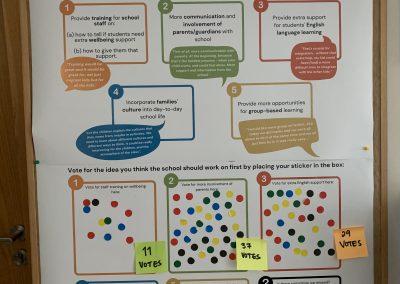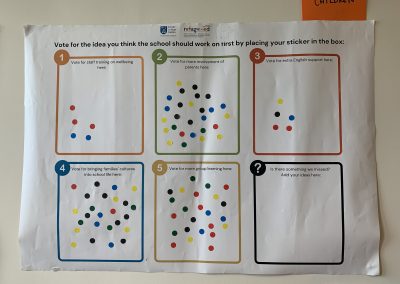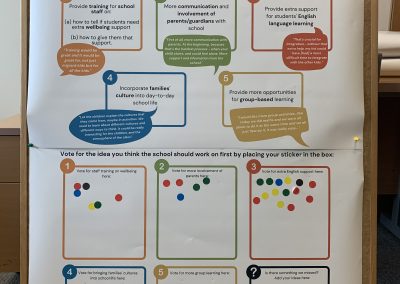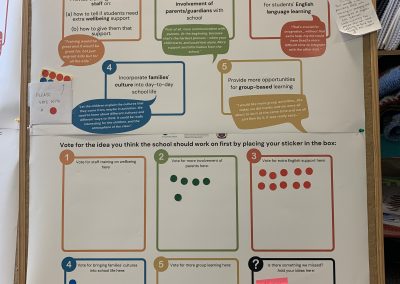Co-creating academic success, wellbeing and a sense of belonging
Co-creation is a central concept in the REFUGE-ED project. It is a methodological framework that ensures engagement of all actors in implementation and fosters reflection and learning across interventions and pilot sites.
In simpler terms, it means that we don’t assume that we are the experts who know what the pilot sites’ needs are and how to solve them. Instead, the REFUGE-ED project partners collaborate with the pilot sites to uncover their needs, and create solutions together based on actions and approaches that we know work.
We talk with and listen to teachers, school managers, community leaders – and of course to the children and their families. We work to uncover the needs and create solutions together. So, as researchers we bring our expertise about education and mental health and psychosocial support – and a catalogue of educational actions and mental health and psychosocial support approaches that we know work and create social impact. The children, parents, schools and communities bring the expertise of their realities, resources and needs.
Informed consent
The first step when doing research is always to provide information about the project and obtain consent from all people involved in the research. The “informed consent forms” that the participants and their caregivers must sign are often long and can sometimes feel a little overwhelming to read.
So as a supplement to the informed consent form, our team in Dublin created a short video explaining the project, the purpose of the research and what was required for participants at a school* with a diverse student group including children with refugee backgrounds.
Dotmocracy
One of the ways to prioritise the needs and determine potential solutions is a method called “dotmocracy”.
The research team interviewed teachers, parents and students about what the school could do better to help migrant and refugee children to feel happy in school, feel like they belong, and feel that they can succeed.
From these interviews five main areas emerged:
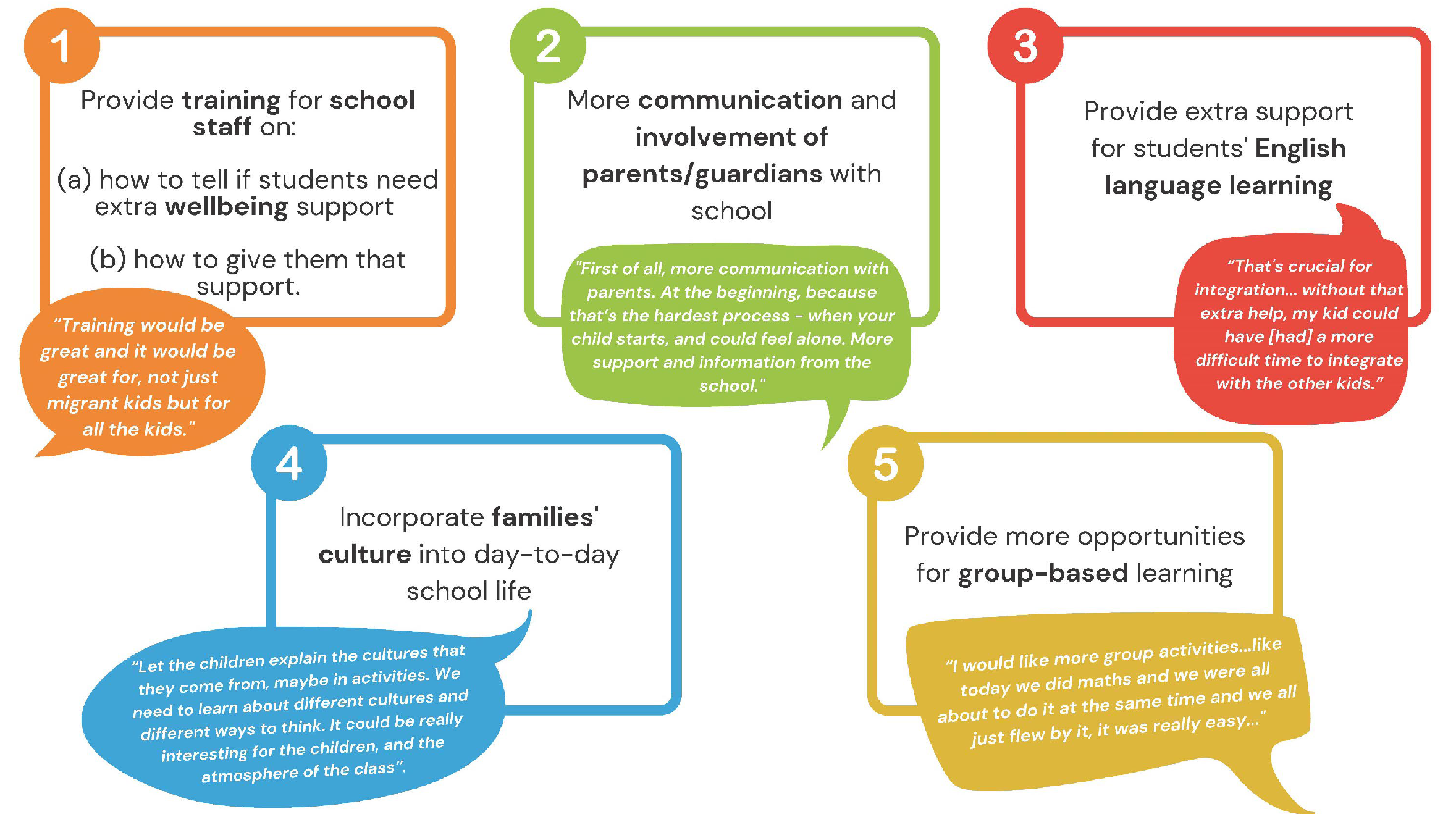
Then, the children, parents and staff were asked to choose which of the priorities they thought should be the first ones to focus on. The research team did this by asking all members of the school community to vote using the “dotmocracy” method: The priorities where printed on large sheets of paper and all the participants had little round stickers – dots – that they could stick to the issue they found most important.
Interestingly, but perhaps not entirely surprisingly, the children and the grown-ups had slightly differing priorities: While the adults favoured “Provide extra support for students’ English language learning”, the children voted for “More communication and involvement of parents/guardians with school”.
* To protect the privacy and confidentiality of the children in the school, the name of the school is not being disclosed to the public. In the video the name of the school has been edited out in places resulting in some abrupt clips here and there.

